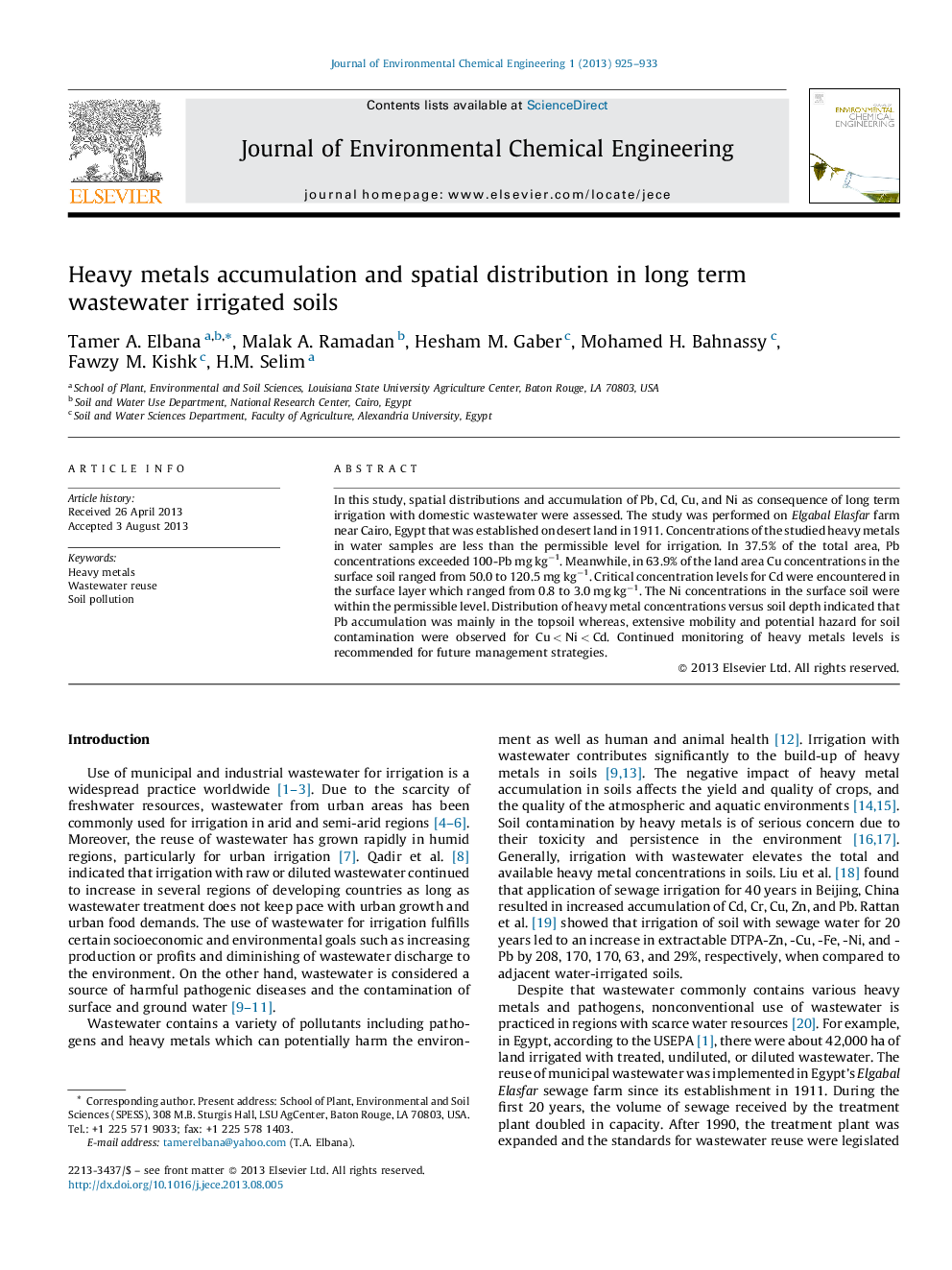| Article ID | Journal | Published Year | Pages | File Type |
|---|---|---|---|---|
| 222484 | Journal of Environmental Chemical Engineering | 2013 | 9 Pages |
•Effects of irrigation with sewage effluents and contaminated areas were assessed.•Lead, Cu, and Ni have high affinity for retention on rich OM-soil layer.•The high mobility of Cd signifies a risk on the groundwater.•The accumulations of Pb and Cu in on topsoil are considered at hazard levels.•The remediation and alternative management strategies are required.
In this study, spatial distributions and accumulation of Pb, Cd, Cu, and Ni as consequence of long term irrigation with domestic wastewater were assessed. The study was performed on Elgabal Elasfar farm near Cairo, Egypt that was established on desert land in 1911. Concentrations of the studied heavy metals in water samples are less than the permissible level for irrigation. In 37.5% of the total area, Pb concentrations exceeded 100-Pb mg kg−1. Meanwhile, in 63.9% of the land area Cu concentrations in the surface soil ranged from 50.0 to 120.5 mg kg−1. Critical concentration levels for Cd were encountered in the surface layer which ranged from 0.8 to 3.0 mg kg−1. The Ni concentrations in the surface soil were within the permissible level. Distribution of heavy metal concentrations versus soil depth indicated that Pb accumulation was mainly in the topsoil whereas, extensive mobility and potential hazard for soil contamination were observed for Cu < Ni < Cd. Continued monitoring of heavy metals levels is recommended for future management strategies.
